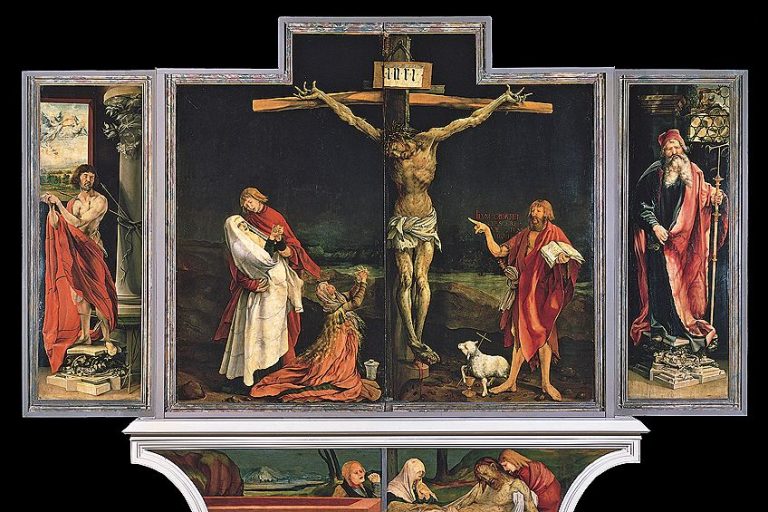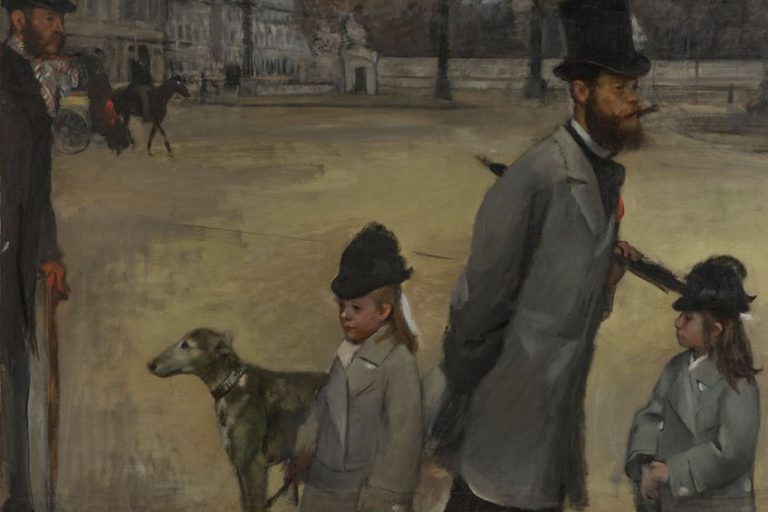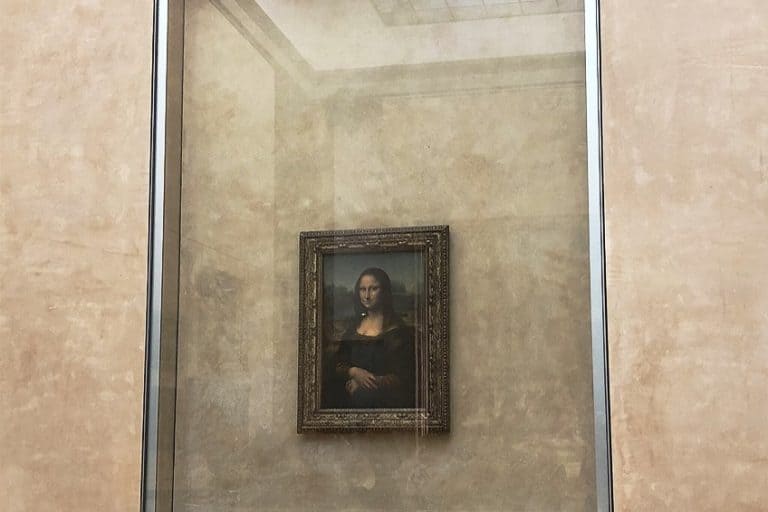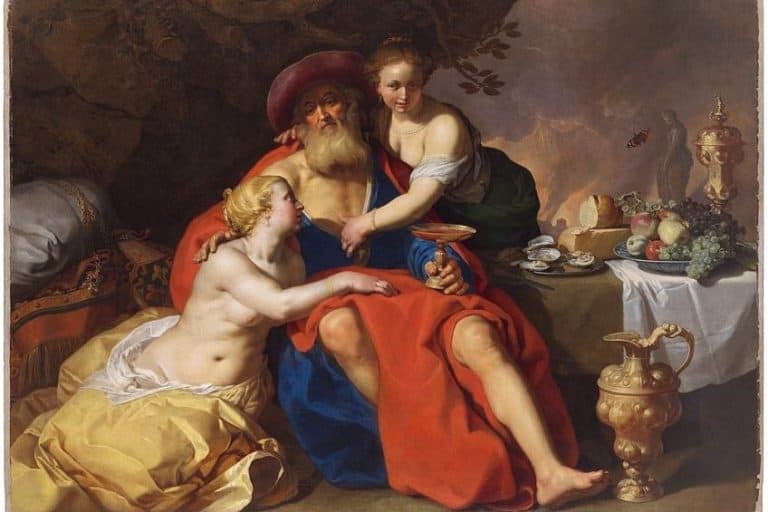“The Burning Giraffe” by Salvador Dalí – A Giraffe Painting Study
The year 1937 was a significant time in Europe, and specifically Spain, which was going through a civil war that lasted almost three years. It was during this time that Salvador Dalí depicted the surrealist innermost tensions that the war had on him in his famous giraffe painting, which is what we will discuss in this article.
Artist Abstract: Who Was Salvador Dalí?
Salvador Dalí was born on May 11, 1904, in Figueres in Catalonia, Spain. He died on January 23, 1989, from cardiac arrest. He started as an artist from an early age, learning drawing from his early teen years and in 1922 he studied at the Real Academia de Bellas Artes de San Fernando in Madrid. Dalí was known as an eccentric personality and became one of the forerunners of the Surrealist art movement.
He was influenced by art styles like Cubism, Dadaism, and Futurism, as well as the psychoanalyst Sigmund Freud.

The Burning Giraffe (1937) by Salvador Dalí in Context
The Burning Giraffe by Salvador Dalí was painted in 1937, a tumultuous time in Spanish history and one that Dalí visually portrayed and in ways predicted. In this article, we will discuss a contextual analysis providing a brief history of the events that took place when this was painted, which will be followed by a formal analysis looking at the giraffe painting in terms of its stylistic approaches.
| Artist | Salvador Dalí |
| Date Painted | 1937 |
| Medium | Oil on panel |
| Genre | Genre painting |
| Period / Movement | Surrealism |
| Dimensions (cm) | 35 x 27 |
| Series / Versions | N/A |
| Where Is It Housed? | Kunstmuseum, Basel, Switzerland |
| What It Is Worth | Some sources suggest it is over $20 million |
Contextual Analysis: A Brief Socio-Historical Overview
The Spanish Civil War started in 1936 and by that time Salvador Dalí was living in Europe, however, he moved to the United States of America in 1940. It was believed that The Burning Giraffe was a “premonition” of the world wars that started several years after the painting.
Furthermore, Dalí’s interest in Sigmund Freud’s psychoanalysis and understanding the deeper meanings held in the mind also plays a large role in “The Burning Giraffe” painting, which we will look at in more detail below.

It is also interesting to note that Dalí explored the burning giraffe idea in other artworks, namely the film L’Âge d’Or (1930), which translates to “The Golden Age” and then again in the painting Inventions of the Monsters (1937), which is housed at the Art Institute of Chicago in the United States of America. A later rendition from 1975, titled Giraffe Avignon or The Burning Giraffes in Brown, depicts two rows of large burning giraffes with a taller giraffe at the end of the line in the far distance.
We will also notice two small, seemingly silhouetted figures in the foreground, dwarfed compared to the larger giraffes.
The Burning Giraffe Meaning
While there is a significant amount of symbolism to unpack in The Burning Giraffe painting. The burning giraffe in the background has been described by Dalí as the “masculine apocalyptic monster” and what he touched on were the rumblings of war and the processes of psychoanalysis. One of these processes is specifically indicated by the drawers protruding from the female figure in the foreground.
Dalí has been widely quoted as describing his painting as an “allegory” and following the “numerous narcissistic smells” that come from “each of our drawers”. This relates to Sigmund Freud’s theories about the subconscious and that we can learn a significant amount about ourselves through analyzing it.
The female figure in the foreground has also been described by Dalí as the “Tail Bone Woman” or “Femme-coccyx”. She has become like a symbol of the feminine being held up by the masculine, or as some describe “patriarchy”, as evident by the “crutches” behind her, which hold up the limp shapes protruding from her back.
Formal Analysis: A Brief Compositional Overview
In the formal analysis below, we will look at The Burning Giraffe by Salvador Dalí in more detail in terms of the art elements like color, texture, line, shape, form, and space. We will start with a visual analysis explaining the subject matter.
Subject Matter: Visual Description
The Burning Giraffe by Salvador Dalí depicts a vast landscape and blue sky with two giant female figures in the foreground as well as a giraffe to the left with roaring flames all along its upper neck and back with smoke rising into the air, which appears cloud-like against the blue sky.
The lower third of the composition depicts a desert-like stretch of land with mountains in the distance.
The rest of the composition depicts a vast blue sky with some floating white clouds. The sky acts almost like a backdrop for the two figures in the foreground. There is a black strip of color along the upper portion of the composition, which appears to be dark cloud formations.
If we look at the two gigantesque figures in the foreground, they appear to be female, but also skeletal with thin layers of skin exposing musculature. The figure closest to us appears more in their view and is almost front facing. Her head, which appears faceless, is turned upward and both her arms are outstretched in front of her.
There are seven drawers coming out of her left leg (our right) and one large drawer protruding from her chest. Her back is held/propped up by what appears to be five curved fork-shaped rods, which have also been termed “crutches”. There are also three soft and limp-looking shapes protruding from her back, each one resting in the curvature of a rod.
Notably, one of these rods is placed between her lower back and coccyx area, seemingly keeping her upper torso connected to her lower torso.
If we look at the figure to the right of the composition, slightly behind the figure in front, there are 14 of the same organic protrusions from her back, which also appear propped up by smaller rods except for a longer one that starts from her feet holding the last protrusion in place.
This figure is holding up what appears to be a piece of flesh or meat in her right hand while her left hand is lowered and her fingers slightly splayed open. There appear to be branches growing out of the top of her head. The giraffe to the left is further into the distance and appears smaller than the large woman in the foreground. There also appears to be a smaller white figure behind the giraffe.
Color
The Burning Giraffe by Salvador Dalí appears in deep blues, browns, and blacks. There is a hint of red and orange from the fire on the giraffe, as well as red from the figure’s face and the piece of skin/meat held by the other figure.
The vast stretch of blue sky creates an eerie mood, which echoes the grayish-blue color of the figure in the foreground.
Texture
Various textures are common aspects in Dalí’s artworks, and in The Burning Giraffe, we see the assortment of organic, smooth, textures, for example, the diaphanous clothing worn by the figures and the floppy protrusions in their backs to the harder textures of the rods holding these shapes in place. Other examples include the implied texture Dalí created for the figures’ sinewy skin, as well as the giraffe’s fur and patterns.
Line
The composition of The Burning Giraffe has a dominant verticality, emphasized by the tallness of the two female figures, the giraffe, and its tall neck, as well as vertical rods held behind the female’s backs, all of which create vertical linearity. The large expanse of sky in the background also heightens these vertical lines.
There are various other types of lines that all interplay towards the composition.
For example, the curved lines on the female figures, on their skin and clothing, the curved lines on the mountains in the far distance, as well as the repeated horizontal lines created from the drawers, and protrusions from the backs of the women in the background, which also create a patterned effect.
Shape and Form
There is a dominance of organic shapes in The Burning Giraffe painting, from the figurations of the two females in the foreground to the giraffe and smaller humanoid figure in the background. The landscape around the figures is also naturalistic.
The more organic forms of the figures are coupled with the geometric rectangular shapes from the drawers, the linear shapes from the rods, as well as the triangular shapes created by the mountain peaks in the far distance.
Space
Dalí created depth and perspective by utilizing various scales, for example, the larger scale of the figures in the foreground contrasts with the giraffe that is on a smaller scale to the left. The figure behind the giraffe is on an even smaller scale, which adds further to the mood and fantastical nature of the composition.
What’s in the Drawer?
Salvador Dalí painted The Burning Giraffe as a warning about war coming, specifically World War II, which started in 1939. However, beyond the focus of the war, the burning questions we face by analyzing the painting touch on ideas about destruction, values, masculine and feminine aspects, and what their roles are within a system that undoubtedly still presents itself in the present day.
Dalí leaves us with a lot to unpack, and from larger-than-life sinewy female figures to burning giraffes, as always, he does not disappoint when it comes to portraying more fantastical subject matter with deeper, hidden, meanings as we have seen in “The Burning Giraffe”.
Frequently Asked Questions
Who Painted The Burning Giraffe?
One of the leading Surrealist artists, Salvador Dalí, painted The Burning Giraffe in 1937. It is an oil painting that has been described as a so-called premonition of the oncoming war and it was painted during the time of the Spanish Civil War.
Where Is The Burning Giraffe?
The Burning Giraffe (1937) by Salvador Dalí is now housed at the Kunstmuseum Basel, otherwise known as the Fine Arts Museum Basel in Switzerland.
What Is The Burning Giraffe Meaning?
The Burning Giraffe (1937) by Salvador Dalí has been believed to be a so-called prediction of war to come, but also the exploration of the mind and the subconscious as inspired by the theories of the psychoanalyst Sigmund Freud.
Alicia du Plessis is a multidisciplinary writer. She completed her Bachelor of Arts degree, majoring in Art History and Classical Civilization, as well as two Honors, namely, in Art History and Education and Development, at the University of KwaZulu-Natal, South Africa. For her main Honors project in Art History, she explored perceptions of the San Bushmen’s identity and the concept of the “Other”. She has also looked at the use of photography in art and how it has been used to portray people’s lives.
Alicia’s other areas of interest in Art History include the process of writing about Art History and how to analyze paintings. Some of her favorite art movements include Impressionism and German Expressionism. She is yet to complete her Masters in Art History (she would like to do this abroad in Europe) having given it some time to first develop more professional experience with the interest to one day lecture it too.
Alicia has been working for artincontext.com since 2021 as an author and art history expert. She has specialized in painting analysis and is covering most of our painting analysis.
Learn more about Alicia du Plessis and the Art in Context Team.
Cite this Article
Alicia, du Plessis, ““The Burning Giraffe” by Salvador Dalí – A Giraffe Painting Study.” Art in Context. September 2, 2022. URL: https://artincontext.org/the-burning-giraffe-by-salvador-dali/
du Plessis, A. (2022, 2 September). “The Burning Giraffe” by Salvador Dalí – A Giraffe Painting Study. Art in Context. https://artincontext.org/the-burning-giraffe-by-salvador-dali/
du Plessis, Alicia. ““The Burning Giraffe” by Salvador Dalí – A Giraffe Painting Study.” Art in Context, September 2, 2022. https://artincontext.org/the-burning-giraffe-by-salvador-dali/.











